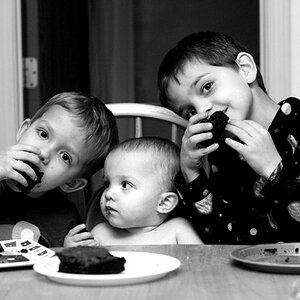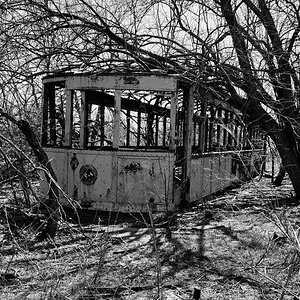ottor
No longer a newbie, moving up!
- Joined
- Feb 7, 2009
- Messages
- 935
- Reaction score
- 173
- Location
- S. Idaho
- Can others edit my Photos
- Photos OK to edit
B&W Print on metallic paper, matted on white, and framed, sold at my gallery.. The Gallery called and the client wants me to come in and 'number' the print. First, let me say that I think the numbering of current/modern photographs are kina foolish and misleading. This isn't the kind of art where the original 'plate' will deteriorate, as the first printing of a digital file will be as good as the last. Hell, the numbering of photographs just started recently... Ansel didn't even number his photographs (As far as I know).. However, the argument goes like this: if it is limited it must be good. And if it is good it must be expensive. And if it is expensive it needs to be limited. And if it is limited it is good..
However, that said, I'm all for "Giving them what they want"...
My question is as follows. When you number an image printed on Metallic photo paper, and then print another on Luster, or pearlescent paper, does that numbering sequence continue, or do you number the exact finished process, and begin another with another type of finish. You know that a photograph printed on Metallic paper, and one that is printed with a Matte finish look totally different. Are they, in the numbering world, the same product - or different, with different numbering series? What about one printed on paper, say, 5/100, and then you have one finished on Canvas, is that now 6/100 ?
I'm gonna run now, and go number a mat on a photograph where it really doesn't mean anything, but was just wondering .... and thinking.
thanks,
r
However, that said, I'm all for "Giving them what they want"...
My question is as follows. When you number an image printed on Metallic photo paper, and then print another on Luster, or pearlescent paper, does that numbering sequence continue, or do you number the exact finished process, and begin another with another type of finish. You know that a photograph printed on Metallic paper, and one that is printed with a Matte finish look totally different. Are they, in the numbering world, the same product - or different, with different numbering series? What about one printed on paper, say, 5/100, and then you have one finished on Canvas, is that now 6/100 ?
I'm gonna run now, and go number a mat on a photograph where it really doesn't mean anything, but was just wondering .... and thinking.
thanks,
r






![[No title]](/data/xfmg/thumbnail/38/38743-ad854d502dddc7f41a927f1731a504cd.jpg?1619738704)
![[No title]](/data/xfmg/thumbnail/32/32433-abebb6cea0cf29d5f27d9054c7b0664e.jpg?1619735443)






